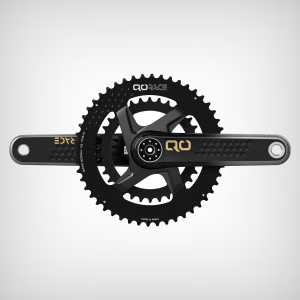When choosing a new wheelset for your road bike or gravel bike, there are several factors to consider. Here are 24 tips to help you make the right choice:
- Type of bicycle: This one sounds like an open door, but what bike are you going to use these wheels for? Road bike wheels tend to be a bit rounder, but even if you have an MTB, other sizes are sometimes common.
- Wheel size: Choose the right wheel size. The standard size is 700c for road and gravel bikes, but nowadays cyclists also choose 650b. These are slightly smaller but often offer more comfort. Even for smaller cyclists (160 and smaller), this wheel size is fine for your frame.
- Rim width: Road bike wheels have a narrower (internal) rim width (around 20-22mm) than gravel wheels. They are more often 24-25 mm wide. This makes sense because gravel tyres are wider and they fit better on the rim.
- Rim height: Higher rims are more aerodynamic but also tend to be more sensitive to crosswinds. Lower rims are more stable in windy conditions. If you cycle a lot in the mountains, lower rims are better, also because of weight.
- Wheel material: Choose between aluminium or carbon. Carbon is lighter and stiffer but usually more expensive. Carbon rims are easily €1000.

- Tyre type: Tubeless, tubular or clincher? Tubeless offers advantages such as riding with lower pressure and less chance of punctures. Tubular is common for competition riders. Clincher is the folding tyre option.
- Tyre size compatibility: Make sure the rims are compatible with the tyres you want to use. If you want to use wide tyres (30mm and above), you should also have an internal rim width that is at least 21mm and actually slightly higher.
- Spoke pattern: More spokes offer more strength and durability but are heavier. Fewer spokes are lighter but can be less robust.
- Type of hubs: Consider the quality of the hubs, as they affect the rolling resistance and durability of the wheelset. The most expensive hubs are those from Tactic TR01 and DT Swiss 180. You can also have entry-level industry hubs. Many other brands used are White Industries, Chris King and Tune. White and Tune are cheaper variants. You can opt for ceramic bearings, which have less rolling resistance, but also affect the price (negatively) right away.
- Freehub compatibility: Make sure the freehub is compatible with your groupset. Also read here the difference between Shimano, SRAM or Campagnolo).
- Bearing type: Sealed bearings offer better protection against dirt and water than unsealed bearings. The choice between ceramic or plain bearings also makes a lot of difference. In terms of resistance/wattage (ceramic is faster and lighter) but also in terms of price. The top of the bill are the bearings from CeramicSpeed
- Quick release or thru-axle: Stem axles offer more rigidity and are common on newer and high-end bikes.
- Brake type: It may sound like an open door, but always pay attention to whether you buy wheels for rim brakes or disc brakes. Although disc brakes are the standard, there are also offerings for rim brakes.
- Aerodynamics: Consider aerodynamics if you often ride at high speeds or in races.
- Weight: Lighter wheels accelerate faster, but heavier wheels can maintain more momentum.
- Sustainability: For gravel bikes, choose wheels designed to handle rough terrain.
- Budget: Determine your budget. Carbon wheels are more expensive than aluminium, but offer certain advantages.
- Brand reputation: Consider wheels from a reputable brand for quality assurance and good customer service. You can of course order rims directly from China, but the low price usually equals low service levels. We have another article with the wheel brands explained here.
- Warranty: Pay attention to warranty terms; some brands offer extended warranties or crash-replacement. Many wheel makers today offer lifetime warranties and a good crash replacement service (e.g. 50% discount)
- Colour and aestheticsThe eye also wants something and to start driving with Christmas tree wheels is another thing.
- Test reviews: Always Google tests and reviews. We have some of our own online, of course.
- Adaptability: Check whether the wheels are adaptable with different adapters or end caps.
- Maximum rider weight: Check the maximum weight the wheels can support. Most wheels support up to 100kg, but if you are a bit heavier, 120-130kg is sumptuously fine.
- Availability of spare parts: Make sure spare parts such as spokes and hubs are easily available.
All in all, there is a lot of choice in road bike wheels. Budget determines a lot, but from around €1000 you have a high-quality wheelset. Not the lightest wheels, but fine for any amateur. From €2000 it quickly becomes a 'fashion item' and the gains in speed and weight are marginal (and only for the pros).





